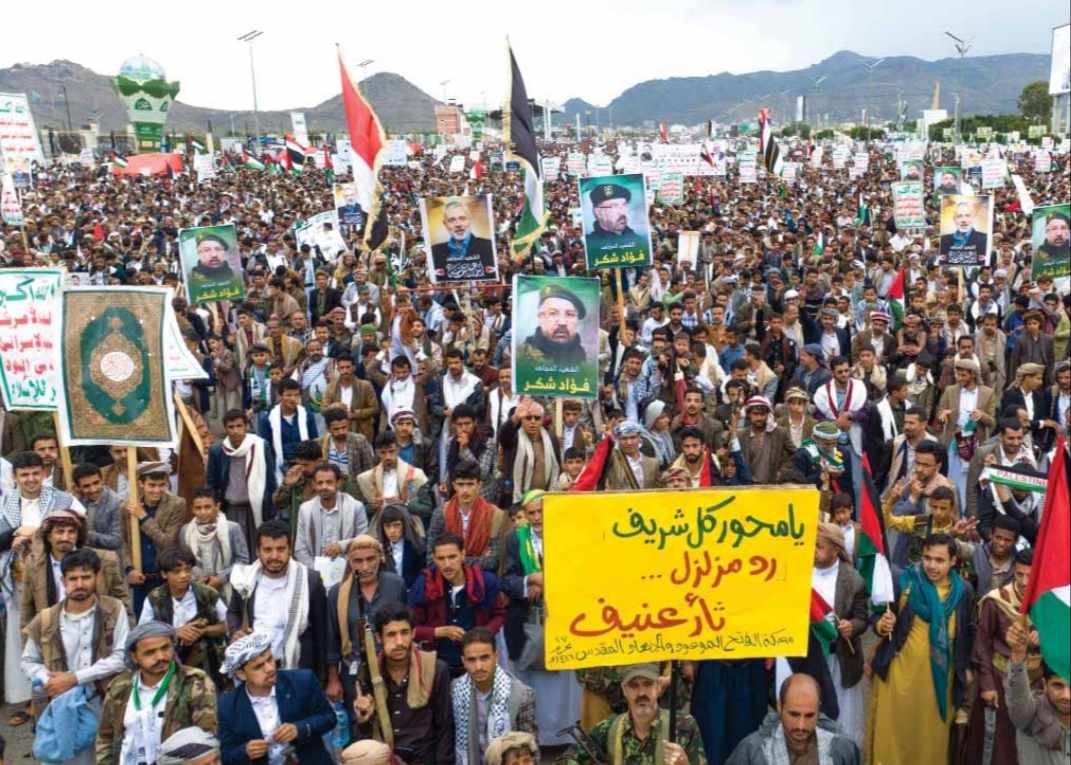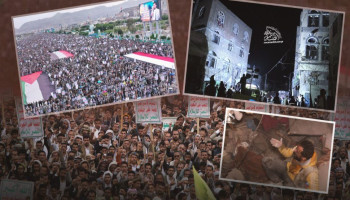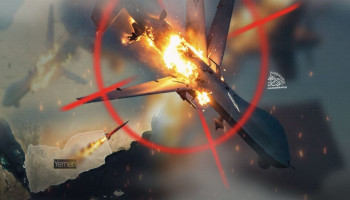The conflict with the Israeli enemy has entered a historical "regional" stage following the enemy's assassination of Ismail Haniyeh, the head of Hamas' political bureau, and senior Hezbollah leader Fuad Shukr. Leaders of the Resistance Axis have stated that this significant act of aggression will not go unanswered. They have pledged a broad and deterrent response, coordinated among all Axis members, signaling an unprecedented strategic shift in the confrontation dynamics with the enemy. This includes supporting the Palestinian people, pushing to end the genocide in Gaza, and shaping the future of the entire conflict towards the inevitable end of the occupation and the cessation of Zionist-American hegemony in the region.
The criminal assassination of Commander Ismail Haniyeh occurred while he was in Iran for the inauguration of the new Iranian president. This came a day after an Israeli attack on Lebanon, resulting in the martyrdom of senior Hezbollah military leader Fuad Shukr, and the targeting of Popular Mobilization Forces sites in Iraq. This followed an Israeli assault on Al-Hodeidah Governorate about two weeks prior, reflecting a pre-planned American-Israeli escalation strategy against the Resistance Axis. The aim was to impose a "deterrence" equation to suppress support fronts and create an illusionary achievement to compensate for the victory the Israelis and Americans failed to achieve in Gaza over the past ten months.
The Axis leaders responded proportionately, with the Leader of the Islamic Revolution in Iran, Sayyid Ali Khamenei, declaring that the Israeli enemy has opened itself up to severe punishment. He announced that Iran would respond forcefully to Haniyeh's assassination on its soil, which the Islamic Revolutionary Guard then affirmed. Hezbollah Secretary-General Sayyid Hassan Nasrallah declared that "all support fronts have entered a new phase" and that the response is "inevitable and unquestionable." The Al-Qassam Brigades stated that the Israeli escalation "moves the battle to new dimensions and will have significant repercussions for the entire region."
Sayyid Abdul-Malik Badreddin al-Houthi, the leader of the Yemeni revolution, affirmed that the response to the Israeli escalation will undoubtedly be carried out by the Axis of Resistance. He declared that Yemen "will spare no effort in avenging the martyrs in cooperation with the Axis," emphasizing that the enemy has expanded the battle to broader levels, with severe consequences for itself.
The firm assertions of the Axis leaders underline several essential truths, primarily that the conflict with the Israeli enemy has indeed become a regional battle. This necessitates countering Israeli arrogance in the region and supporting the Palestinian people in the "Al-Aqsa Flood" battle. This means significant and unprecedented shifts in the current battle and the entire conflict's trajectory, as this level of regional confrontation impacts all geopolitical balances in the region, including dominance and deterrence equations and their related interests. Axis leaders are clearly determined to impose a deterrence reality, forcing the Zionist entity into two choices: either continuous widespread war liberated from operations that are limited in size and power, or acknowledging, in light of the response results, that it cannot win this round, thus ending the Gaza war to calm the situation. Both options lead to one outcome for the enemy: the impossibility of its safe existence in the region.
According to the Axis leaders' assertions, what follows is not limited to the presence of regional fronts but also initiates full operational and political coordination among them to achieve unified goals on the battlefield and in the future. This marks the end of the U.S. plan since the beginning of the "Al-Aqsa Flood," which aimed to separate the Axis fronts, making it easier to target them individually. This represents a genuine shift in the regional power balance and the beginning of a new geopolitical future that collapses all enemy calculations to secure the Zionist entity's existence and survival. The Zionist entity and its American patrons have never faced such an effective regional front at this level.
Regarding the response, it is evident from the various Axis parties' assertions that it will be exceptional, focusing primarily on significantly harming the Israeli enemy, deterring it practically, and disrupting its political and operational calculations. Sayyid Hassan Nasrallah confirmed preparations for a "real and well-studied response, not just symbolic." Iran's UN mission stated that the response would involve "focused special operations to hurt the enemy." Sayyid Abdul-Malik Badreddin al-Houthi also emphasized that the response "will be significant," speaking of "revenge for the martyrs."
In this context, Abdul-Malik al-Ajri, a member of the Yemeni national negotiating delegation, stated, "The response is coming, and we may witness joint operations. The most important thing, as Sayyid Hassan Nasrallah said, is that the response is very well-studied." He explained that "the response is not just to satisfy the angry people's desire (rightfully so) but considers that the enemy and its supporters are in the highest states of alert to thwart any unplanned operation. The battle continues and escalates, and the chances for revenge will not be delayed much. The coordination among the Resistance Axis parties is at its peak, and with divine support, we may witness joint operations that will pain the entity and satisfy the resistance fighters."
Many reports indicate ongoing high-level coordination among the Resistance Axis parties regarding the response to the Israeli enemy.
These assertions indicate that the Axis is preparing for qualitative operations with surprising tactics, including breaching international and regional defensive shields that the enemy is amassing around itself. Arab puppet regimes have begun talking about not allowing their airspace for military operations (after opening it to American and Israeli planes). A high-level American delegation visited Saudi Arabia specifically to discuss the escalation between Yemen and the enemy, as revealed by the American website "Axios" two days ago. Needless to say, American, British, and European forces have also pushed all their capabilities to counter the Resistance Axis's response.
Accordingly, the Resistance Axis's response may include introducing new advanced weapons and tactics to breach defensive barriers, doubling the response's impact and influence on the enemy, both presently and in the future, and disrupting many of its calculations and estimates regarding the Resistance Axis.
In other words, it can be said that the Resistance Axis has undertaken to deliver a blow (or several blows) whose immediate effects will make it impossible for the enemy to hide their significant impact, representing a strategic shift in the conflict's trajectory.







